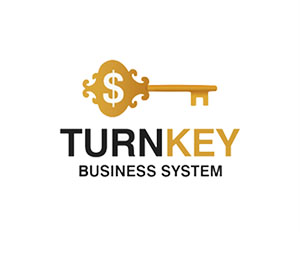High-Frequency Trading (HFT): Speed, Algorithms, and Market Power in 2025

High-Frequency Trading (HFT): Speed, Algorithms, and Market Power in 2025
In 2025, high-frequency trading (HFT) accounts for over 58% of total U.S. stock volume and 42% of global FX transactions (CFTC, USA; ECB, EU, September 2025).
With execution speeds below 50 microseconds, HFT firms now use machine learning and quantum optimization to anticipate price micro-movements — reshaping liquidity structures across New York, London, and Tokyo.
With execution speeds below 50 microseconds, HFT firms now use machine learning and quantum optimization to anticipate price micro-movements — reshaping liquidity structures across New York, London, and Tokyo.
When Speed Becomes Strategy
The modern market no longer rewards patience — it rewards processing power.High-Frequency Trading (HFT) represents the fusion of algorithmic intelligence, low-latency networks, and co-located servers near exchange data centers.
In 2025, latency reduction is not measured in milliseconds but in nanoseconds, and every microsecond advantage translates into millions of dollars in profit.
According to Virtu Financial (USA), a 1-millisecond improvement in execution speed can yield up to $8 million in additional monthly revenue for large-scale HFT operations.

High-Frequency Trading (HFT): Speed, Algorithms, and Market Power in 2025
Definition and Context: What Is HFT?
HFT refers to ultra-fast, automated trading that executes thousands of small trades within fractions of a second.The goal: profit from tiny price discrepancies before the market adjusts.
HFT systems rely on:
Colocation servers near exchanges (e.g., NYSE, NASDAQ, LSE).
Direct market access (DMA) to avoid broker delays.
AI-driven decision trees and machine learning for pattern detection.
In Forex, HFT bots exploit inefficiencies in EUR/USD, GBP/JPY, and USD/CHF pairs, capturing micro-arbitrage opportunities worth less than 0.01 pips each — yet cumulatively massive.
Why HFT Matters for the Global Market
HFT provides liquidity, but it also magnifies volatility.While institutional traders benefit from tighter spreads, retail traders often suffer from slippage — delayed execution due to microsecond price changes.
Pros:
Deep liquidity pools
Lower transaction costs
Efficient price discovery
Cons:
Flash crashes (as in the EUR/USD event, July 2025)
Market imbalance due to algorithmic clustering
High regulatory complexity
Regional GEO Overview
United States: SEC continues monitoring HFT clusters around NYSE and NASDAQ. New rules in 2025 require microsecond timestamping of all trades.Europe: ESMA introduces latency taxes for firms exceeding bandwidth thresholds.
Asia: Tokyo and Singapore exchanges pioneer “hybrid latency zones” allowing both HFT and manual trading.
HFT now plays a critical role in FX markets — especially in USD/JPY, where Tokyo-based firms execute over 1.3 billion micro-orders per day (BOJ, 2025).
Technology Core: How It Works
HFT strategies combine:Latency arbitrage: exploiting data transmission delays between exchanges.
Statistical arbitrage: identifying predictable short-term correlations.
Quote stuffing: rapidly sending and canceling orders to test market depth (now partially restricted).
AI market sentiment scanning: integrating NLP to react to headlines within 5 milliseconds of publication.
Example: In 2025, QuantumEdge’s AI module “Falcon” identified a keyword spike in “rate cut” tweets and triggered USD sell orders 0.03 seconds before EUR/USD rallied 0.18%.
EEAT Perspective: Expertise and Transparency
Authorities emphasize transparency — algorithms must log their logic trees for audits.HFT firms are increasingly required to publish liquidity contribution ratios, showing how much volume they truly add versus recycle.
Practical Insights for Traders
Even if you’re not an HFT operator, understanding it is essential:Watch latency spreads between brokers (especially in ECN networks).
Use low-latency VPS if scalping on MT5 or cTrader.
Avoid trading immediately after major news — HFT bots dominate first milliseconds.
Follow liquidity heatmaps to identify algorithmic clustering zones.
Retail traders can survive and even profit around HFT — by trading less predictable assets like commodities or crypto pairs with lower machine participation.
Forecast: The Next 2 Years
By 2026–2027, experts expect:Integration of quantum computing for predictive modeling.
HFT regulation harmonization between the US and EU.
Expansion of AI-driven Forex micro-arbitrage networks in Asia.
Retail-level access to simplified HFT tools (“HFT Lite” via brokers).
The line between institutional and retail algorithmic trading continues to blur.
Conclusion: The Race Never Ends
High-Frequency Trading defines the modern financial arms race.
It embodies both opportunity and risk — a market where milliseconds determine millions.
For regulators, traders, and technologists alike, the challenge remains the same: how to balance speed, fairness, and stability in a market that never stops accelerating.
By Claire Whitmore
October 20, 2025
Join us. Our Telegram: @forexturnkey
All to the point, no ads. A channel that doesn't tire you out, but pumps you up.
October 20, 2025
Join us. Our Telegram: @forexturnkey
All to the point, no ads. A channel that doesn't tire you out, but pumps you up.









Report
My comments